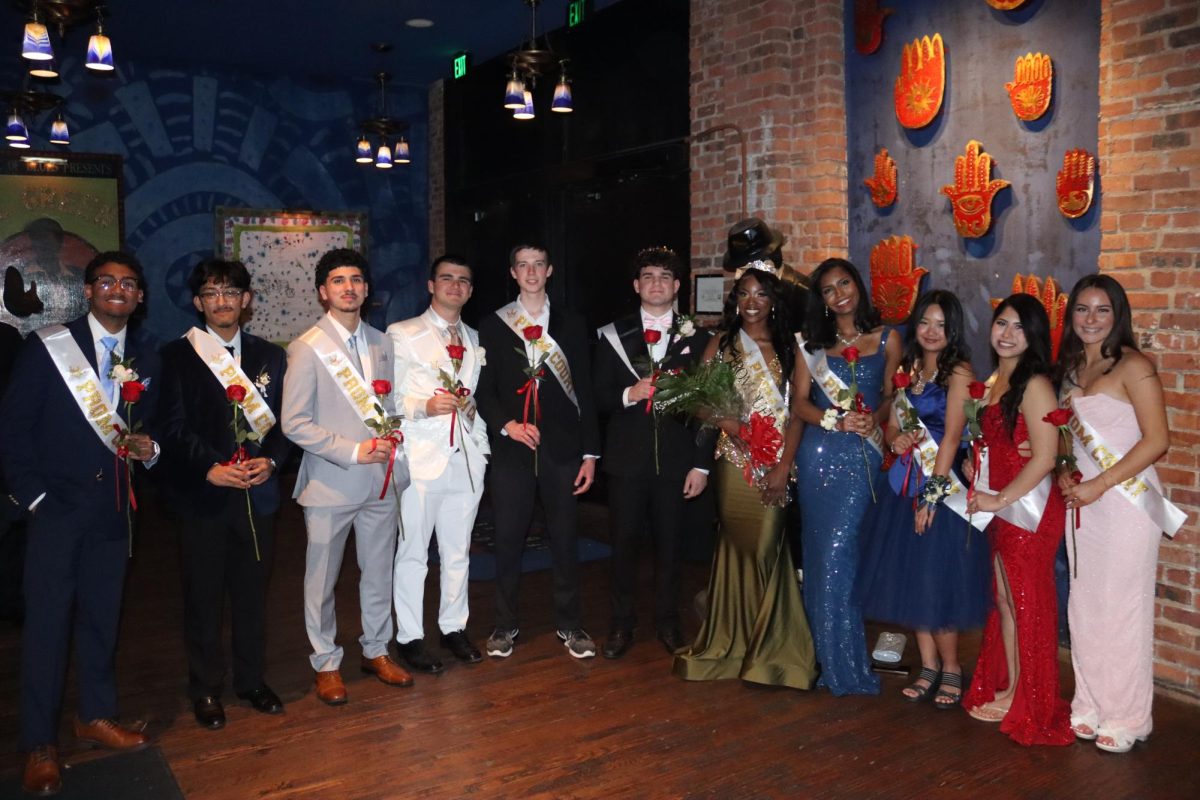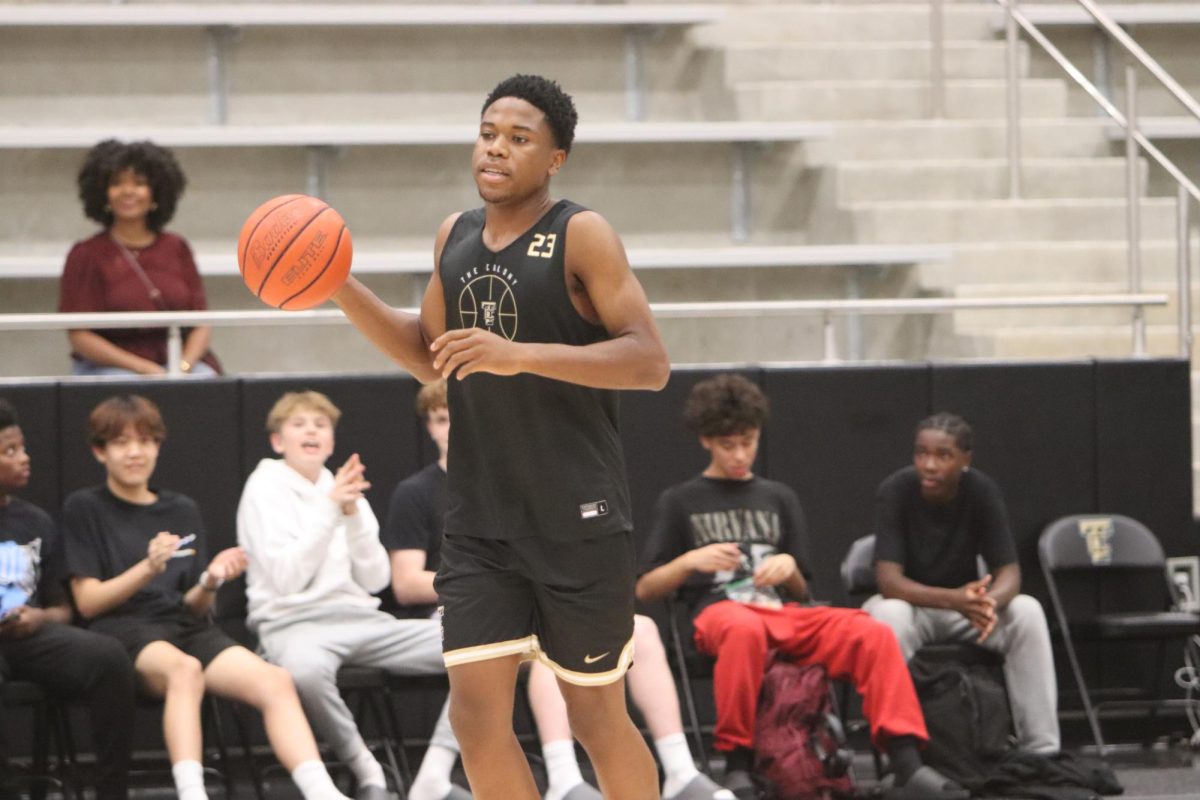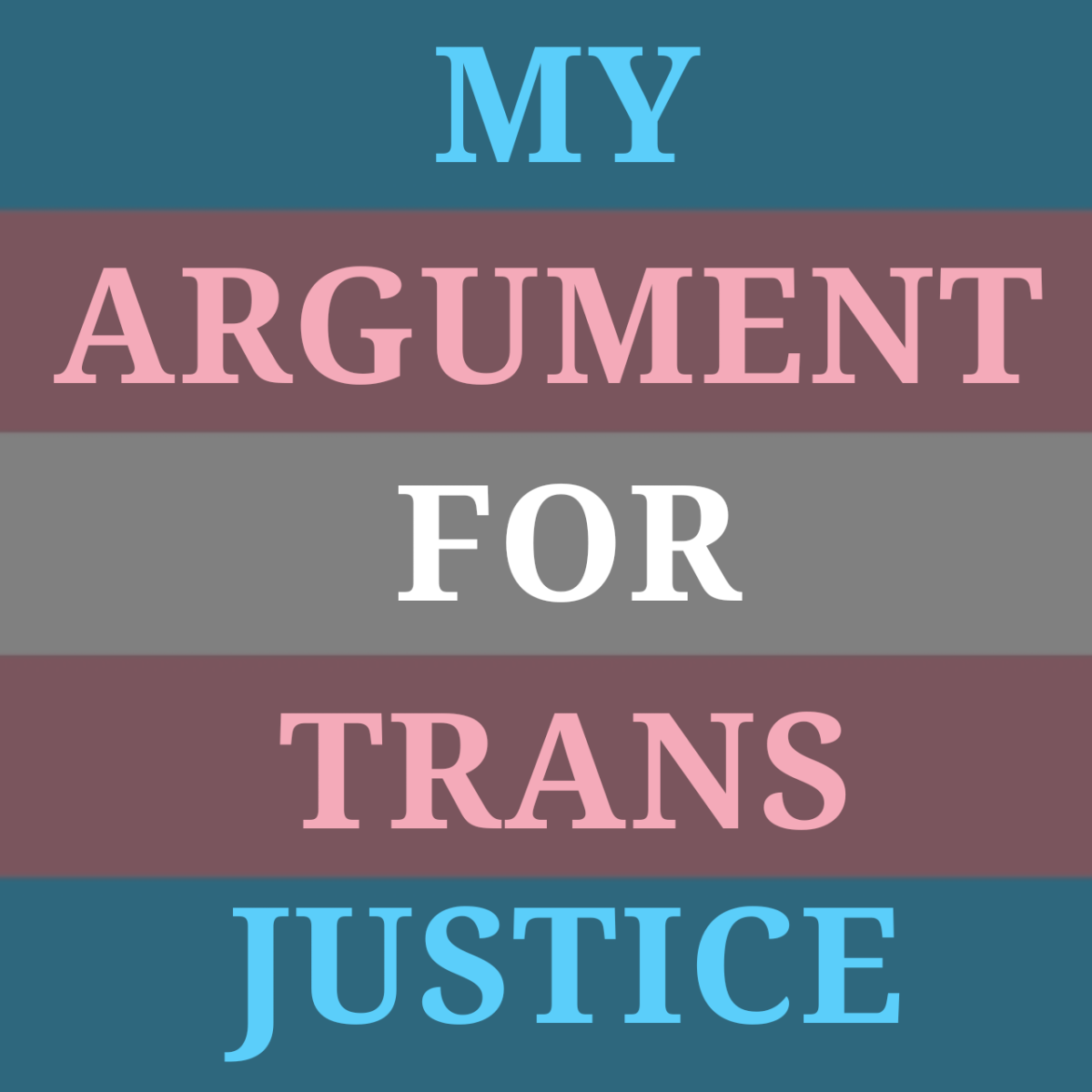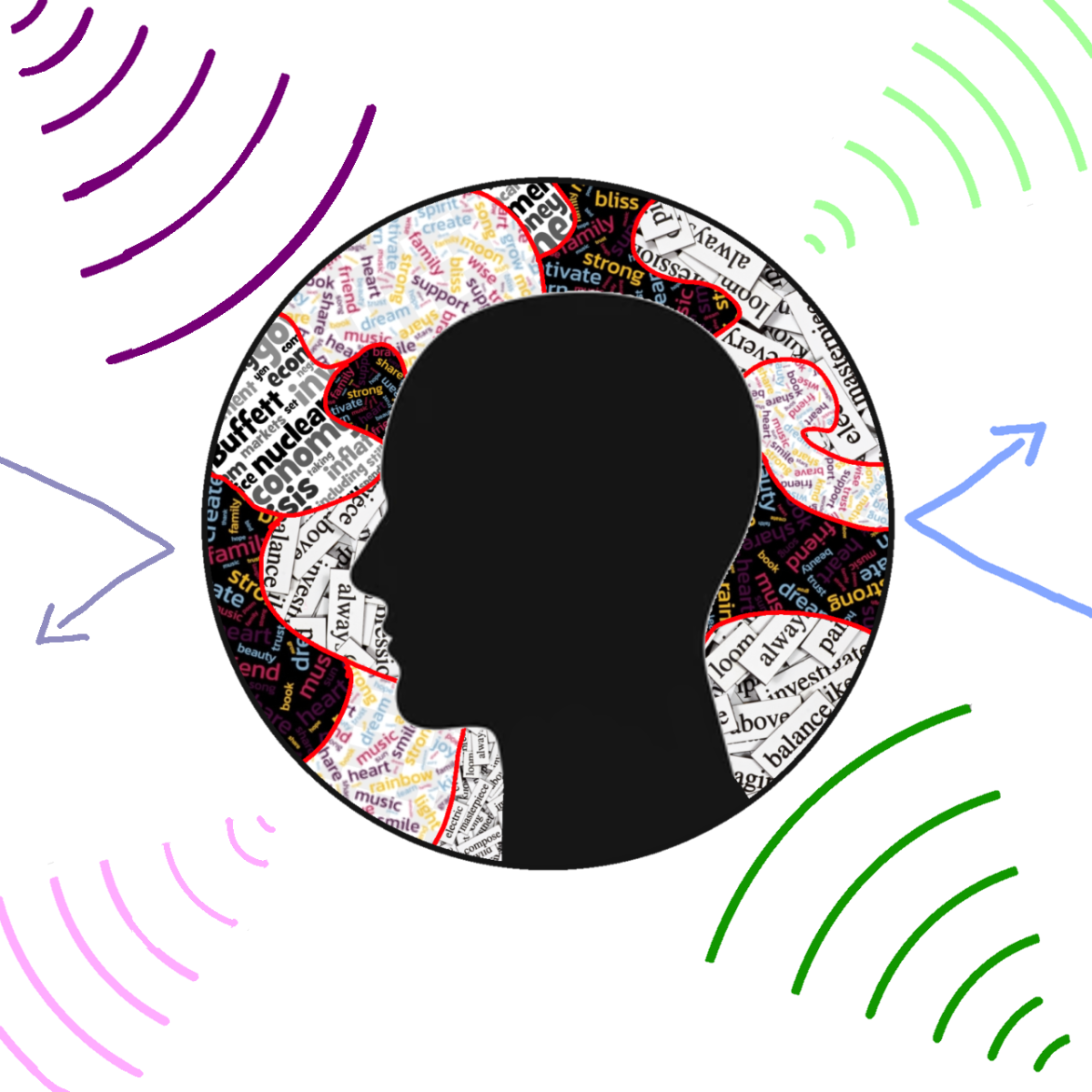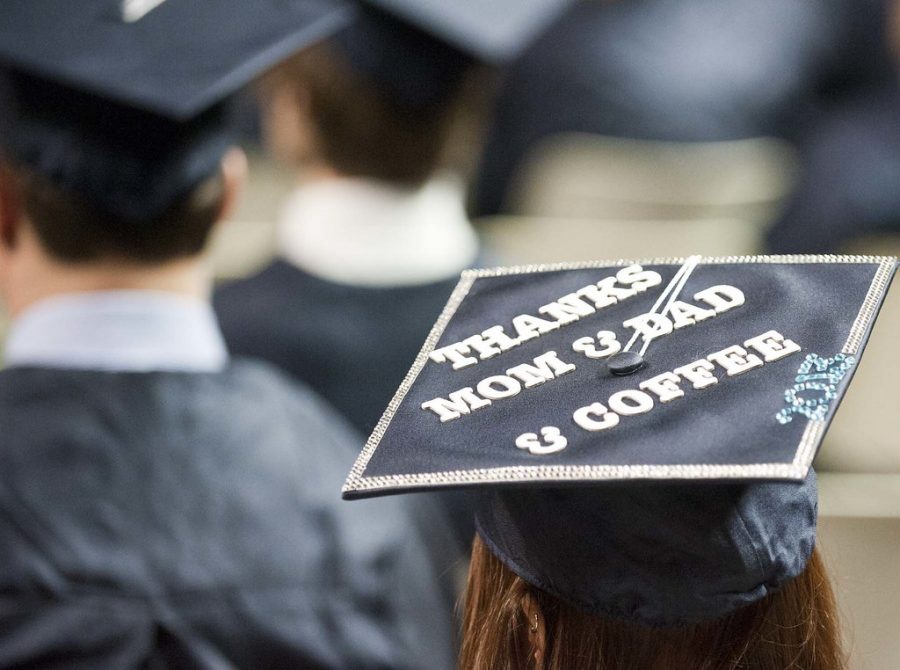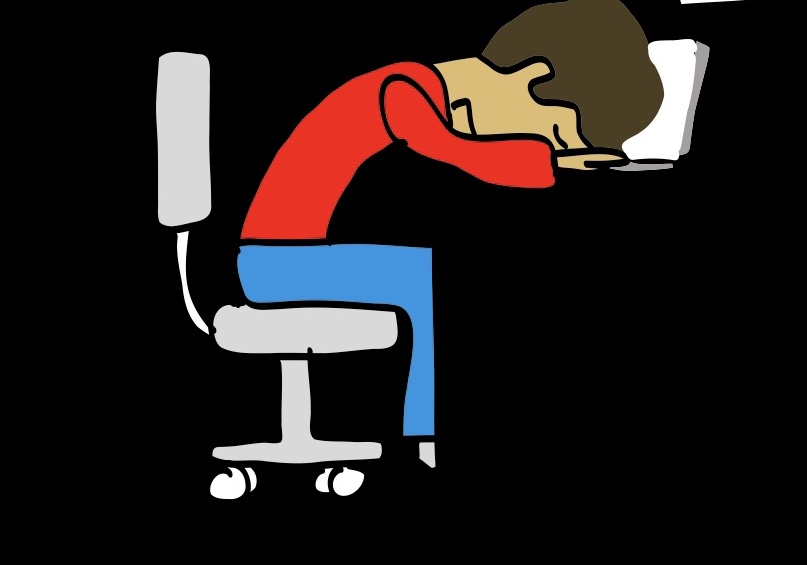To the teacher who told me that “there just aren’t any great transsexual authors”; who told me that if I wanted to succeed as a writer I would have to operate under a pseudonym and “stop writing about the whole trans thing”, this article is for you.
HOW WE ARE FAILING TRANS YOUTH
A 2020 Human Rights Campaign study found that 29% of transgender youth reported being threatened or attacked with a weapon at school, compared to 7% of their cisgender peers. Additionally, 43% of transgender youth report experiencing bullying, compared to 18% of cisgender youth. Beyond school, trans people are also four times more likely than cis people to experience violent victimization, including rape, sexual assault, and aggravated assault, according to a 2021 study by the Williams Institute at UCLA School of Law. Furthermore, properties that house a transgender person(s) also have higher rates of property victimization than all-cisgender households. This treatment is not without consequence, a 2021 study from The Trevor Project found that trans youth attempt suicide at more than four times the rate of their cis peers.
The way trans youth—including myself—have been treated on school grounds is unacceptable. And it’s not just students who are to blame—teachers and administrators who let it slide are just as, if not more, responsible. I’m sick of teachers who claim to enforce a “strict no-bullying policy” until I report that a classmate called me a slur—suddenly, they want to remind me that “everyone is entitled to their opinion” and that I shouldn’t be so sensitive. I have no more respect for administrators who preach about “safe spaces” but look the other way when their favorite students bully me, redirecting the conversation to something they deem “more important.” This failure isn’t just anecdotal. A 2019 study from the National Library of Medicine found that in a national survey of U.S. LGBT students, 61.6% reported that school personnel did nothing in response to their most recent report of harassment or assault at school. Those who bully trans students aren’t just influenced by media and bigoted peers—state officials and school boards are now institutionalizing this discrimination; one article titled What One State’s Transgender Student Policy Could Mean for Students by Eesha Pendharkar, explains that a Virginia school policy now requires teachers and staff to refer to students only by their legal name and sex assigned at birth—unless a parent files a written petition. Even if a petition is granted, the student’s legal name shall not be changed in school records. The policy also forces trans students to use bathrooms and play on sports teams that align with their sex assigned at birth, regardless of their gender identity. Eden Heilman, Legal Director of the American Civil Liberties Union of Virginia, summarizes the danger of these policies best: “Probably to me, the most concerning piece of it is that it requires almost a forced outing of students to their parents. So trans students, who potentially might be at risk of both physical and emotional abuse at home or homelessness, now potentially may be facing even more risk at home, because this policy requires that parents be made aware.” Instead of protecting trans students, schools are making them more vulnerable—both in the classroom and at home.
This isn’t just a Virginia issue—anti-trans policies are spreading across the U.S. In Florida, the so-called “Don’t Say Gay” bill restricts discussions of LGBTQ+ topics in schools—Oklahoma and Arizona have banned trans youth from competing in sports. Meanwhile, Texas lawmakers have gone so far as to target the parents of trans youth with legal action. These policies don’t just affect legal rights; they shape how trans youth are treated in their day-to-day lives—including at school. When state governments pass transphobic laws, they send two clear messages. To trans youth, they send the message that they are alone, that the adults meant to protect them won’t—because the law says they can’t. To bullies and even transphobic teachers, these laws send another message: mistreating trans students is acceptable, because the state and school boards do it every day.
BIOLOGY, PSYCHOLOGY, & PERSONAL BELIEFS
One of the most alarming statistics I’ve cited is that trans teens are over four times as likely to attempt suicide as their cisgender peers. Some try to dismiss this by claiming that being trans is a mental illness and that the higher suicide rate has nothing to do with bullying or mistreatment. The idea that being trans is a mental illness, or that it goes against basic biology stems from the belief that sex and gender are the same thing, but they’re not. As board certified OB GYN Danielle Jones, better known online as Mama Doctor Jones, explains, the idea that science doesn’t support the idea of being trans “comes from the idea that science says your chromosomes can be XX or XY and that means you are male or female … however, this is based on very basic science … which notably isn’t completely accurate” she then explains “about one in 2000 babies in the United States will be born with what we call ambiguous genitalia, meaning it is not immediately clear just from looking at their physical appearance, if they are male or female” this shows that, like gender, even biological sex isn’t completely binary. She also cites that “nearly every major medical and scientific organization, as well as countless peer-reviewed scientific publications, have agreed that [being transgender] is not a choice, and not a mental disorder.” The American Psychology Association affirms her statement, “transgender people do not experience their gender as distressing or disabling, which implies that identifying as transgender does not constitute a mental disorder”, the APA also explains that the distress felt by some transgender people is related to a lack of access to gender affirming care, and because they may feel unaccepted in society, not because being transgender is inherently distressing. As Dr. Jones puts it, “science is inclusive, are you?”
The real question regarding trans suicide should be “how can we prevent it?” In Suicide Risk and Prevention for Transgender People, Jody L. Herman & Kathryn K. O’Neil found that trans youth with supportive families had significantly lower suicide attempt rates (5.8%) compared to those with unsupportive families (13.1%). Additionally, transgender youth whose families used their chosen name reported fewer suicidal thoughts than those whose families refused. Or, in simpler terms: the closest thing to a “cure” for the high transgender suicide rate is acceptance.
There’s a group of people who discredit the statistics and arguments I’ve made for religious reasons. I respect everyone’s right to religious freedom; this is not something I plan to discuss at length in this piece. I would, however, like to posit that believing in God should be about peace, love, and acceptance, not about hate or violence. When your beliefs promote love, that love should extend to everyone—including transgender people, both within and outside your family and religion.
THE ROLE OF MEDIA
An argument you’ll often hear from transphobes is that the media is indoctrinating children into being trans, and yet, often, it does the opposite. As a trans person who’s been on social media, let me tell you, once you leave a very limited bubble of trans safe spaces, the hate starts flooding in from all sides—TikTok, Instagram, Reddit, nowhere stays safe for long. And it’s also this media that also helps to turn people into transphobes. Historically, trans people have been used as a source of humor rather than being portrayed as actual people. This drought in good representation is further compounded by transphobic commentators and politicians being promoted by the media, specifically, I would like to touch on the misinformation that this spreads and how it negatively impacts public opinion of trans people. In an interview with Fox News, president Donald Trump reiterated a statement from his address to congress, stating that the Department of Government Efficiency “found hundreds of billions of dollars … spent on making mice transgender”, now, I’m sure we can all agree that if hundreds of billions in government funds went towards “making mice transgender”, that would be an irresponsible waste of money, if only that were the case. It turns out, the study that the president was referring to actually surrounds transgenic mice, these are mice that have modified DNA, allowing us to better study how genes impact disease and health; let me be clear, transgenic mice are a good thing, they allow us to do ground breaking research on cancer and drug development. Perhaps it is worth acknowledging that transgenic mice have been used to study effects of hormone replacement therapy, however, that is far from their main purpose—not to mention that hormone replacement therapy is something also enjoyed by many cisgender people—generally speaking, transgenic mice are completely unrelated to transgender people. This one quote, spreading like wildfire, has led me to being told by my own classmates that transgender people are at fault for the economic issues in the USA, that is a dangerous mindset for someone to have about a marginalized group, especially when it simply isn’t true.
This is part of a longstanding issue with media and famous people in regards to transgender people, it relates to both the things we believe about transgender people, as well as the language we use for them—Elon Musk, another transphobic celebrity/politician, stated recently on X (formerly Twitter) “[t]he words ‘cis’ or ‘cisgender’ are considered slurs on this platform.” The claim that the term cisgender is a slur is far from new but having that idea promoted by the owner of a popular social media platform is harmful. To clarify, cisgender is not a slur, nor is it offensive—a cisgender person is simply someone who isn’t transgender. Cis is a Latin prefix meaning “on this side”, whereas trans means “on the other side”. The problem with banning the term cisgender, aside from taking away the ability to use correct specificity when referring to someone’s identity, is that it enforces alternative language for referring to cis people, in this case, many will default to saying “normal” or “actual”, this is harmful because it promotes the idea that transgender people are abnormal or lying. Of course, there’s the term “biological”, which, while an accurate way to describe a person relative to their sex, lacks specificity in identity and can exclude intersex people. Essentially, when we remove terms like cis, we reinforce a dichotomy, an “us vs. them” mentality within the minds of both trans and cis people that ultimately makes it more difficult to empathize with one another.
TRANS PEOPLE IN BATHROOMS & SPORTS
Media has also convinced many that trans people cannot go into their preferred bathrooms/spaces because it may put women or children at risk, particularly of being sexually assaulted in public bathrooms or change rooms. This claim, however, lacks proof and relevance; in 2021, the Williams Institute reviewed crime data and found that there was no correlation between inclusive bathroom access and assault on women, furthermore, the FBI crime reports from the last 20 years have shown that the overwhelming majority (more that 95%) of sexual violence on cis women is committed by cis men, not trans women, just men. Not to mention, women being assaulted in restrooms in general is extremely rare, for perspective, an archival review by the National Policing Institute examined cases of sexual assault in cities with inclusive bathroom policies throughout the U.S., they found that less than 3/500 assaults occurred in bathrooms, and they found none that were related to a transgender woman or a man posing as a woman. In fact, with all the manufactured fear around trans women possibly being predatory, we forget to actually empathize with the victims we’re claiming to care about. Trans people are actually more likely to experience sexual assault than cisgender women. According to the Human Rights Campaign nearly 1/2 of all transgender people reported experiencing sexual assault compared to 1/3 of cisgender women, these numbers rise when the trans person in question is non-White or homeless. Additionally, the Williams Institute found that 70% of trans people reported experiencing some form of verbal harassment, or mistreatment in a public restroom, with 12% reporting that they were physically attacked at some point. If you truly care about safety in public restrooms then you should care about safety for all, not just cisgender people.
Many people are concerned about trans people in sports, particularly trans women. I would like to acknowledge where this argument is coming from, males are, on average, physically stronger and larger than women, therefore, it makes sense that somebody with biologically male physiology may have an advantage over cis women in sports. While there are some studies that look into the correlation between years on hormone replacement therapy and a lack of physical advantage, what I would really like to touch on is how this issue is so blown out of proportion—according to the National Collegiate Athletics Association, in 2025, there are fewer than 10 known transgender athletes competing at the collegiate level, that’s not even one percent of one percent of all collegiate athletes. Before the collegiate level, and especially at the middle school and elementary school levels, biological sex hardly matters. Before puberty, most kids operate at similar levels athletically, so allowing for co-ed or trans-inclusive sports teams is hardly a problem at that age. This is not to diminish the possible issues that could come with trans people in sports, this is to acknowledge the way that this issue has been twisted beyond recognition and used to discredit trans people rather than have civil discussion about fairness in sports. In the following section, I explain how scrutinizing too aggressively against transgender people in sports and restrooms actually ends up doing more harm than good.
TRANSPHOBIA: RACISM, MISOGYNY, HOMOPHOBIA
Take the story of Imane Khelif. Khelif is an Algerian women’s boxer who competed in the 2024 Paris Olympics. After Khelif quickly won a match against Angela Carini, she went on to win gold, this, however, was followed by Khelif suffering a barrage of transphobic hate online—J.K. Rowling (author of books such as Harry Potter), who has faced backlash for transphobic remarks in the past, joined in to bully Khelif saying that Khelif had “[t]he smirk of a male who’s knows [sic] he’s protected by a misogynist sporting establishment enjoying the distress of a woman he’s just punched in the head, and whose life’s ambition he’s just shattered”—posted on X (formerly twitter) alongside a picture of Khelif post-victory next to Carini who appears to be crying. Elon Musk joined in dragging Khelif—voicing his agreement that Khelif does not belong in women’s sports. The kicker here is that Khelif isn’t trans, she is cisgender, assigned female at birth, and she has never identified as anything else. Khelif was the victim of transphobic attacks simply because people online decided that she “looked too manly”, therefore, they assumed that she must be trans. This is one of the dangers of scrutinizing trans people in sports—it also highlights the notable way in which transphobic scrutiny is often aimed at women of color. The executive director of Humans of Sport, Payoshni Mitra, points out that women from the global south are more likely to experience sex scrutiny, accusations of being male, and being subjected to sex testing practices. In a 2024 article for PBS, journalist Noreen Nasir explains that tennis player Serena Williams, and Basketball player Brittney Griner, both Black, have each received allegations and backlash online from people who accuse them of being biologically male—“[r]egardless of differences in sex or hormones, women of color—and Black women in particular—have often been subjected to stereotypes that portray them as more masculine” writes Nasir; Cheryl Cooky, professor of women’s, gender, and sexuality studies at Purdue university, explains that womanhood “is often reliant upon westernized notions of White beauty” if a female athlete is unable to meet these White beauty standards, “they’re subject to these questions and accusations”. This highlights the way that racism and transphobia overlap, and one of the ways in which transphobia can also affect cis people.
The previous paragraphs highlight the way transphobia can impact cis people on a professional level, but it’s also worth acknowledging on a smaller scale—in Utah, state school board member, Natalie Cline, made a Facebook post accusing a teen basketball player of being transgender, beyond the fact that the girl was actually cisgender, it is also wildly inappropriate to post a picture online of a child of any identity, accusing them of being transgender and opening them up to being attacked. The girl in question then experienced bullying, harassment, and online threats to both herself and her family. The girl’s parents spoke out on the Utah television station KTVX, “They’re putting pictures of other people’s children on the internet and then allowing people to just bully a child. It’s an adult bullying a child … it doesn’t matter what their agenda is or what they think they thought they thought [sic]—there’s really no excuse that can merit putting another person’s child on social media and then allowing them to be attacked”. This highlights the way that transphobia can overlap with misogyny: because a girl didn’t “look feminine enough” or “move like a girl”, she was attacked; transphobia is inherently rooted in our preconceived notions of what a man or woman should be and so when we enforce them upon transgender people, cis people are shoved into boxes as well. It is not fair that only people who perform their gender “correctly” should be respected.
This issue is not only limited to sports—recently, in Tucson, Arizona, Black cisgender lesbian, Kalaya Morton, was harassed by two male sheriffs in a Walmart women’s restroom. This is yet another example of the ways in which transphobia overlaps with racism and homophobia—“I’m afraid now. It’s already enough being Black and facing discrimination. Now I have to worry about being harassed just for needing to pee?” Said Morton who, reportedly, hasn’t gone into a public restroom since. Morton reportedly lifted her shirt to prove herself a female, at which point she received no apology; instead, the sheriffs, who had been tipped off by a walmart employee, simply told her that she “looked like a man”—Morton puts it best, “[t]he only men in the women’s restroom were the cops”.
One of the major holdups of anti-trans laws and rules is enforcement. The fact is, not all trans people look the same, cis people also feature a variety of body types and hormonal makeups, and this isn’t even taking intersex people into account. If you want to keep trans people out of restrooms or sports, how do you know who’s trans? As demonstrated in the previous paragraphs, you can’t always tell by appearance; should we require a state issued ID to use the bathroom? Should we physically inspect each person? There is no ethical way to properly enforce these laws—and doing so only forces further discrimination towards racial minorities, women, and other queer people.
DETRANSITION
Another argument often raised by transphobes is: “What if they regret transitioning?” There are two reasons this argument doesn’t hold up. First, transitioning is not something to regret. Transphobes love to falsely claim that we’re giving hormones and surgeries to toddlers, but that’s a strawman. The vast majority of transgender minors begin with social transition—changing their name, pronouns, and appearance—which is entirely reversible. Some minors may also use puberty blockers, which are medications designed to delay puberty until the individual can make a more informed decision as an adult. While many transphobes have tried to portray puberty blockers as irreversible, they actually don’t cause permanent changes. According to the Mayo Clinic, “GnRH analogues [puberty blockers] pause puberty. When a person stops taking them, puberty starts again,” providing time for youth to explore their gender identity. It’s worth adding that puberty blockers are not just for trans kids, they have been used for years for cisgender children who went through puberty too early or had hormone-related complications; in taking away puberty blockers, we would hurt both trans and cis children who need them.
Furthermore, the detransition rate (the rate at which trans people go back to identifying as their sex assigned at birth) isn’t what transphobes make it out to be. In the article by Stonewall UK dispelling myths around detransition it’s explained that “[d]etransitioning is very rare, but it does happen. A research analysis showed that of the 3,398 trans patients who had appointments at an NHS Gender Identity Service between 2016 and 2017, less than one per cent said in those appointments that they had experienced regret, or had detransitioned; less than 1% of people experience transition-related regret, compare that to 18% of knee surgery (arthroplasty) patients, and yet nobody seems so concerned about banning knee surgery. It’s also worth mentioning that in the same Stonewall UK article it is explained that “The most common reason for detransition is the person couldn’t cope with the family and community support they lost and the experiences of transphobia. Where others may detransition because they are unable to find a job or housing.” One example is Kate Hutchison, a trans woman who detransitioned due to societal transphobia but now lives as her authentic self. As she writes, “The only time I saw visible trans people were when they were the focus of nasty jokes in the media or sensationalist headlines. I would get the same abuse in the street, and I saw no empathy or understanding in society as a whole for trans folks.” The reality is that if you’re truly concerned about the potential regret of transitioning, the best thing you can do is offer acceptance. The primary cause of regret and detransitioning is unacceptance. People who detransition because they realize that they are not transgender are real, and they deserve to be heard, but they are also few and far between and their validity does not take away from the existence of trans people.
CULTURAL & HISTORICAL IMPORTANCE
An important but often overlooked aspect of this discussion is the cultural and historical context. Many people believe that their anti-trans views are rooted in “common sense” and that transness is something new or strange, but in many ways, it is actually the other way around. Transness has been seen, and accepted in many different ways and many different cultures throughout history, the global rise of anti-transness is actually what is new and strange. As the 2022 National Geographic article How Historians Are Documenting The Lives of Transgender People states, “There’s ample evidence of gender variance throughout human history.” Examples include the gala and galli priests in ancient Sumer, Akkadia, Greece, and Rome, who were assigned male at birth but crossed gender boundaries in worship of goddesses. Many cultures have acknowledged a third gender, such as the two-spirit people in Indigenous communities and Hijra, nonbinary individuals in South Asia who fulfill ritual roles.
There was also the Roman emperor best known as Elagabalus, ruling from C.E 218 – 222, who, despite being born male, is documented as dressing in traditional women’s garb, requesting to be referred to as a woman, and is even said to have repeatedly expressed a desire for a genitalia switching surgery. Stepping further into the present, we are presented with the story of James Barry, a high ranking military surgeon from the 1700s who was discovered, after death, to be biologically female. And this is far from the only example. Many African societies had roles for transgender individuals dating back centuries. Medieval European records contain references to transgender people, and transgender people have been documented in Japan since the 1600s. These are just the documented cases—there are undoubtedly many more that were lost, destroyed, or never recorded. Trans people have always existed, and they always will. Society doesn’t get to decide whether trans people exist; it only gets to decide whether we exist safely.
THE COST OF ACCOMMODATION
Some may argue that schools cannot be asked to accommodate trans students because it is just “too much” to ask of them; that assertion is laughable. When we talk about schools accommodating trans students, let’s be clear on what that means. The majority of accommodations for trans students boil down to protection from bullying, use of correct names and pronouns, freedom of expression, and gender neutral spaces. These are things that schools should be providing anyway; schools are supposed to protect from bullying, it shouldn’t suddenly be too much to ask when the student is trans. Using a students correct name and pronouns is afforded to cisgender students, and if a staff member persistently misgendered a cisgender student, they would likely receive disciplinary action, it should be the same for trans students. Students choosing whether to wear male or female clothing is something most schools already allow and is a choice enjoyed by cisgender students as well. The presence of gender neutral bathrooms is hardly too much to ask—if a school has 10, 20, or 25 gendered bathrooms, they can afford to have even just 2 or 3 gender neutral bathrooms, these bathrooms can also be enjoyed by cisgender students who are gender non-conforming and feel more comfortable in non-gendered spaces. The idea that trans students are somehow asking for too much comes from an inflated view of what it actually means to accommodate a trans person. Furthermore, schools should be accommodating, this is not something new—schools have long been expected to accommodate students from different backgrounds or who have different abilities, it should not suddenly be too much to ask when the student in need of accommodation is trans.
TO CONCLUDE
In closing, trans youth, and the trans community as a whole, deserve better. I maintain to this day that the intense bullying I went through as a transgender middle schooler was legitimately traumatizing. And even now as a high schooler, though I am lucky to have switched to a more accepting school, the challenges have not disappeared; I haven’t forgotten the evening that a group of boys from this school yelled “get AIDS and die, f*gg*t!” out of a car window at me. I haven’t forgotten the girls who drove me to exclusively using the nurse’s bathroom by taking videos of me captioned with slurs, calling me a creep for being in there, while filming me in the bathrooms. I’m writing this article because I’m just so angry. Angry because this is all so preventable. Angry because nobody seems to care. And that, right there, is why I will never “stop writing about the whole trans thing”.




